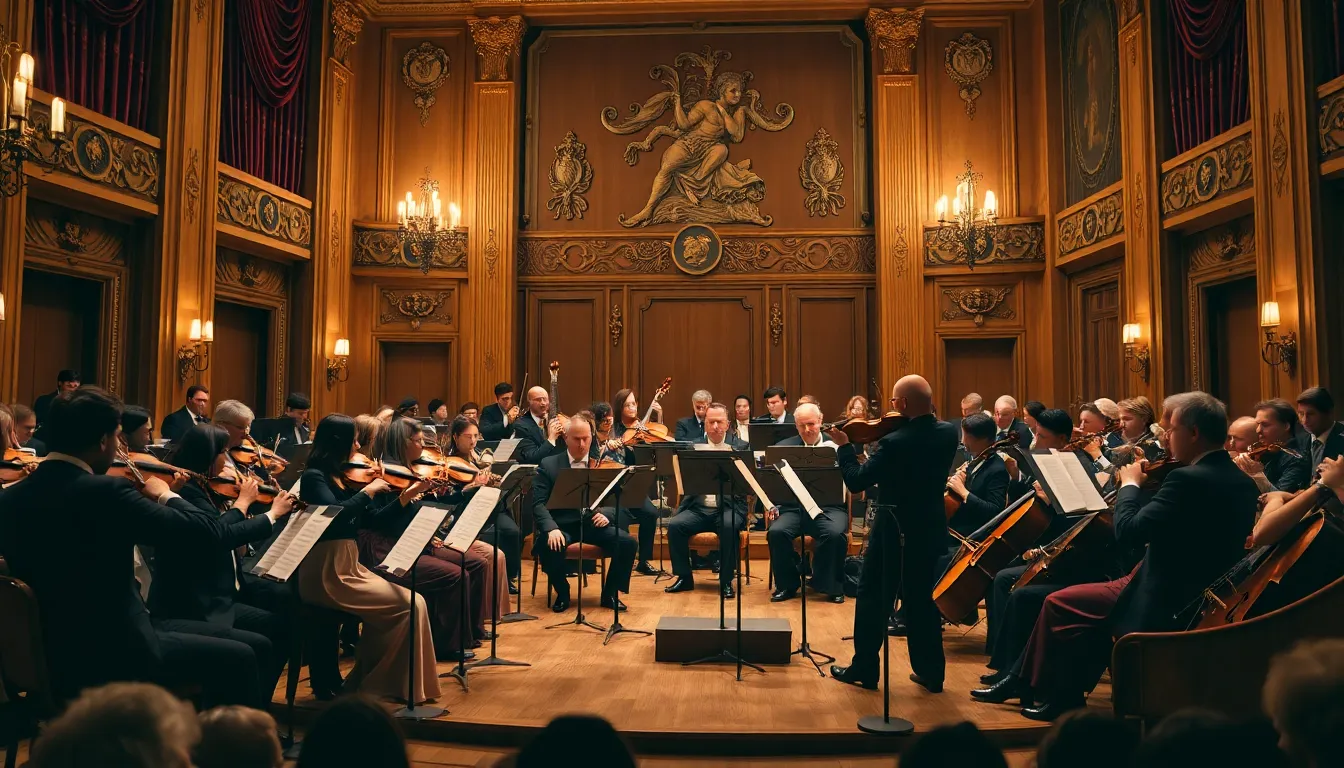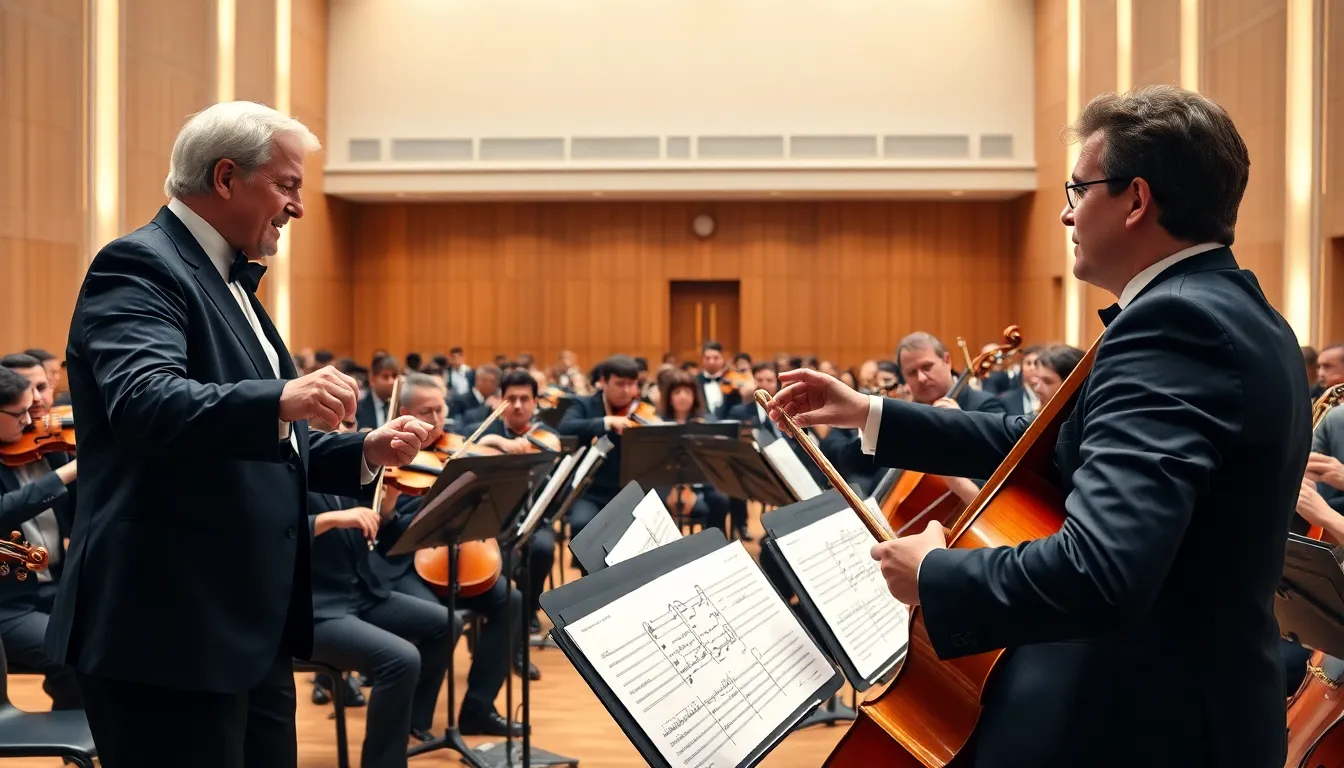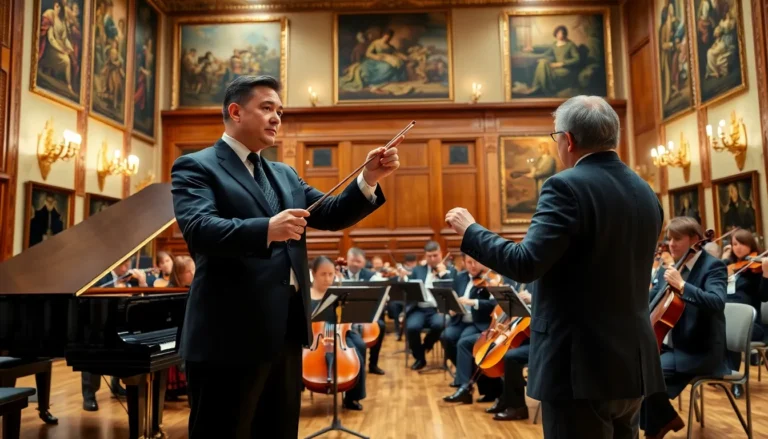Imagine a world where musical notes danced elegantly through the air, where composers wielded their talents as master painters wield their brushes. Welcome to the Classical Era of music, a period marked by profound innovation, emotional depth, and technical prowess. When you think of composers like Mozart or Haydn, you might feel a sudden urge to don a powdered wig. But fear not: this article will explore the delightful nuances of Classical music without the need for questionable fashion choices. Let’s jump into the enthralling world of this vibrant musical epoch that remains a cornerstone of Western music.
Table of Contents
ToggleOverview of the Classical Era

Emerging around the mid-18th century, the Classical Era of music stretched well into the early 19th century, serving as a bridge between the ornate complexity of Baroque music and the emotional depth of Romantic music. This period marked a revival of clarity, balance, and form, which stood in stark contrast to the layered textures and intricacies of its predecessor. It was a time characterized by the rise of the symphony, sonata, and concerto, genres that would dominate and shape the foundation of Western music.
Also, this era’s influence isn’t limited to compositions. The philosophical currents of the Enlightenment, focused on reason and individualism, were intertwined with musical developments. Hence, Classical music was not merely about sound: it mirrored the cultural shifts happening across Europe. By exploring this remarkable time, one can appreciate how Classical music laid the groundwork for future composers and genres.
This era saw the establishment of orchestras as we know them today, with standardized sections of strings, woodwinds, brass, and percussion coalescing to generate the symphonic sounds that continue to resonate even now.
Key Characteristics of Classical Music
Classical Era music boasts several defining features that set it apart from its predecessors and successors. One of the most significant is its emphasis on clarity, balance, and proportion. Composers began favoring homophony, where a single melody is prominent over supportive harmonies, over the complex polyphony typical of the Baroque sound. This shift made music more accessible and expressive.
Another hallmark is the use of form. Structures like sonata-allegro, rondo, and theme and variations became essential tools for composers, providing a framework for their creative expression. Using clear, logical structures allowed for a more conversational style in music, akin to a riveting dialogue between instruments.
Also, dynamics played a crucial role. The Classical Era introduced a wide dynamic range, from soft passages called “piano” to loud, assertive sections known as “forte.” This dramatic contrast added emotional depth and variety, engaging audiences in a way that earlier music had not.
The melodies themselves were often lyrical and memorable, standing out against the backdrop of intricate harmonies. If the Baroque period is akin to grand operatic performances, Classical music resembles an intimate conversation, polished yet profoundly expressive.
Major Composers of the Classical Era
When discussing the Classical Era, a few names inevitably stand out. The likes of Wolfgang Amadeus Mozart, Joseph Haydn, and Ludwig van Beethoven have become synonymous with this rich musical period.
Wolfgang Amadeus Mozart is often heralded as the quintessential composer of the Classical Era. His contributions were vast, ranging from symphonies to operas, each noted for exceptional melodies and intricate harmonic structure. Pieces such as “Eine kleine Nachtmusik” and “The Magic Flute” exemplify Mozart’s ability to blend technical mastery with irresistible charm.
Joseph Haydn, often referred to as the “father of the symphony,” was a monumental figure whose influence cannot be overstated. His innovative approaches to structure and form laid the groundwork for future compositions. Noteworthy works like the “Surprise Symphony” showcased his playful spirit while maintaining the Classical ideals of clarity and balance.
Finally, Ludwig van Beethoven, straddling the Classical and Romantic periods, challenged conventions with his bold ingenuity. Beethoven pushed boundaries, expanding emotions and expressions in his music. His symphonies, like the triumphantly powerful Ninth Symphony, not only exemplify his genius but paved the way for future composers to explore more profound emotional depths in music.
Influence of Classical Music on Later Genres
The effects of Classical music reverberate through the ages, significantly influencing various genres that followed. From jazz to pop, elements of Classical music can be found woven into the fabric of modern music.
Key Works and Their Significance
For example, Beethoven’s Ninth Symphony has been adapted and reprised in numerous contexts, from film scores to commercial jingles. The stirring “Ode to Joy” continues to inspire and evoke emotional responses, transcending its original setting.
Also, many later composers drew inspiration from the structured forms of the Classical Era. The clarity and sophistication of Classical compositions can be identified in the minimalist movement, where artists such as Steve Reich and Philip Glass echoed the rhythmic patterns and repetitive structures reminiscent of Classical composers.
Pop music too has directly tapped into the vein of Classical influences. Artists like Coldplay and Lady Gaga have incorporated orchestral elements into their work, illustrating that the essence of Classical music is far from forgotten. Its influence remains deeply entrenched, proving that good music is timeless.
Cultural and Historical Context
To understand the significance of Classical music, one must appreciate the cultural and historical backdrop of the era. The Enlightenment ideals promoting reason, individualism, and egalitarianism permeated through society, resonating with the music of the time. It was as if the very fabric of human experience was demanding a new release of artistic expression.
An increasingly literate middle class emerged during the 18th century, eager for entertainment and intellectual stimulation. This demographic shift expanded the audience for music, allowing it to flourish beyond the confines of royalty and aristocracy. Public concerts became common, and music’s accessibility transformed its role in society. Composers found themselves not just artists but also entrepreneurs navigating the new musical landscape.
Besides, the political turmoil of the French Revolution and the rise of nationalism in various regions fostered a dynamic environment for artistic expression. Composers began to incorporate local musical idioms and national themes into their work, adding layers of meaning beyond mere melody and harmony.



